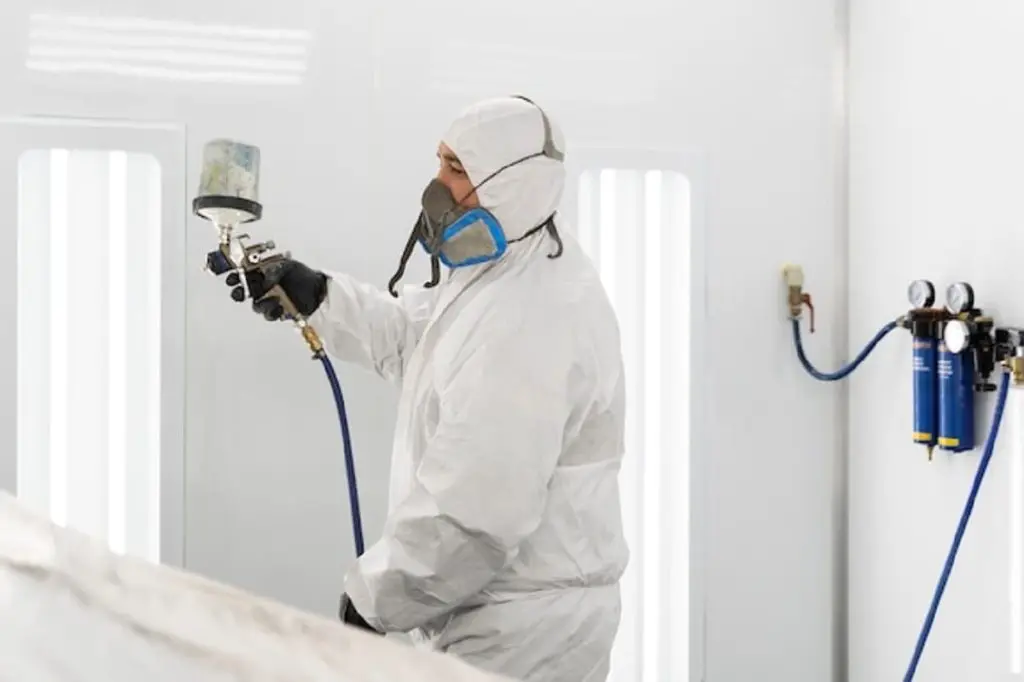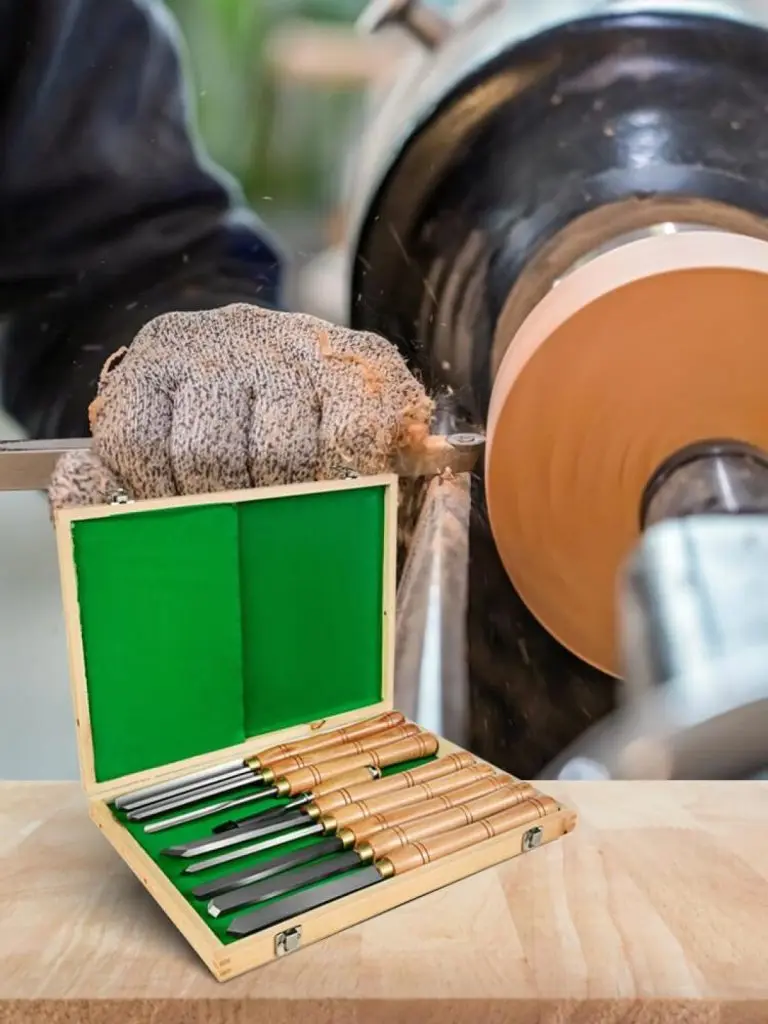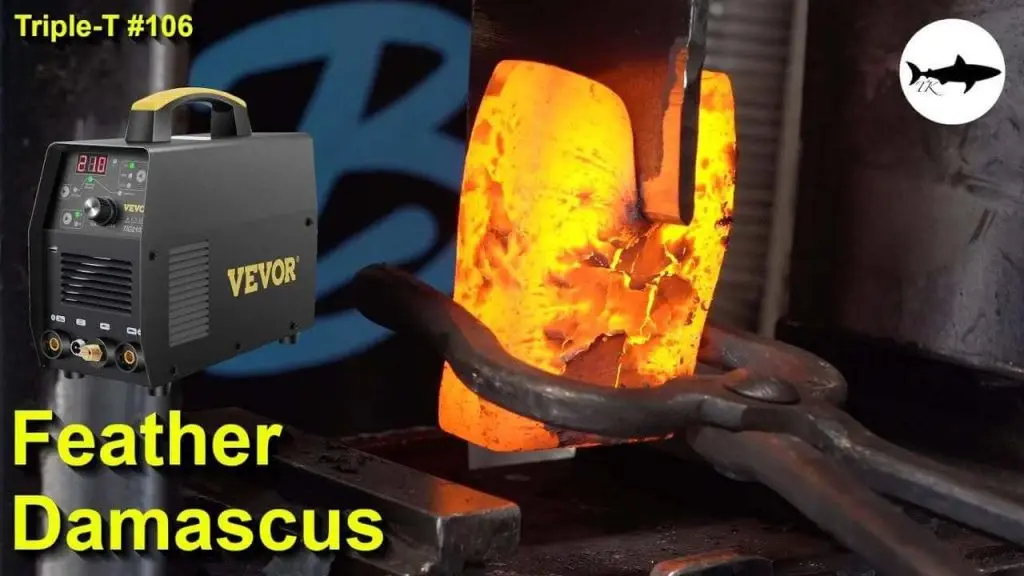Choosing the right paint sprayer can be tricky. Should you go with HVLP or Airless? Each has its own benefits. This guide will help you decide. We’ll compare the two, making it easy to pick the best one for your needs.
Let’s take a closer look at basing your HVLP vs airless sprayers foundations and meet VEVOR paint sprayers – an ideal choice for any painting work.
Table of contents
What is an HVLP Paint Sprayer?
How Does HVLP Work?
HVLP paint sprayers use high-volume, low-pressure technology that employs a turbine to expel paint in the form of aerosols. The air is compressed to a lower pressure that varies between 10 and 20 PSI to force the paint through the delta T five nozzle.
This process of delivery of plaster creates a fine mist that ensures a nice, clean and smooth application of the plaster on the wall. It comes with low pressure to minimize overspray and is best suited for highly detailed work as seen with HVLP sprayers.
The fact is that HVLP sprayers utilize air-driven technology as their primary working mechanism. As they force air to atomise the paint, these sprayers produce a much softer spray, eliminating the potential for paint runs and dripping.
It also increases the efficiency of HVLP sprayers in utilizing paint, as less paint is wasted through overspray. In conclusion, HVLP spray guns are ideal for those instances where very delicate work is being done and a very thin layer of paint is needed.
Advantages of Using an HVLP Sprayer
Another advantage of using an HVLP Sprayer is that it offers a fine finish. If you are staining or painting furniture, cabinets, or any other object that needs a continuous even coat of paint, then the HVLP sprayer is the best option. This results in better coverage with the least overspray, hence less use of paint and therefore cutting on cost.
Further, HVLP sprayers are more efficient when working on projects of small to medium size where accuracy is valued more than speed.
HVLP is more suitable for fine working, such as windows, trims, furniture, and cabinets, among other areas that require a controllable spray application. As these sprayers are more precise, they are suitable for professional tasks and projects that need a perfect result.
Disadvantages of HVLP Sprayers
One of the primary disadvantages of using high-volume, low-pressure equipment is that it has lower application speed than airless sprayers. The only disadvantage of using this tool is that it may take longer when working on a large room area.
One disadvantage of HVLP sprayers is that they may not work well with heavier materials, like latex paint. The low pressure might not be sufficient to atomize these materials effectively, making the finished coat to be uneven. In such circumstances, you may have to dilute the paint or switch a type of sprayer altogether. Nevertheless, HVLP sprayers continue to be considered for intricate work and short jobs.
What is an Airless Paint Sprayer?
How Does an Airless Sprayer Work?
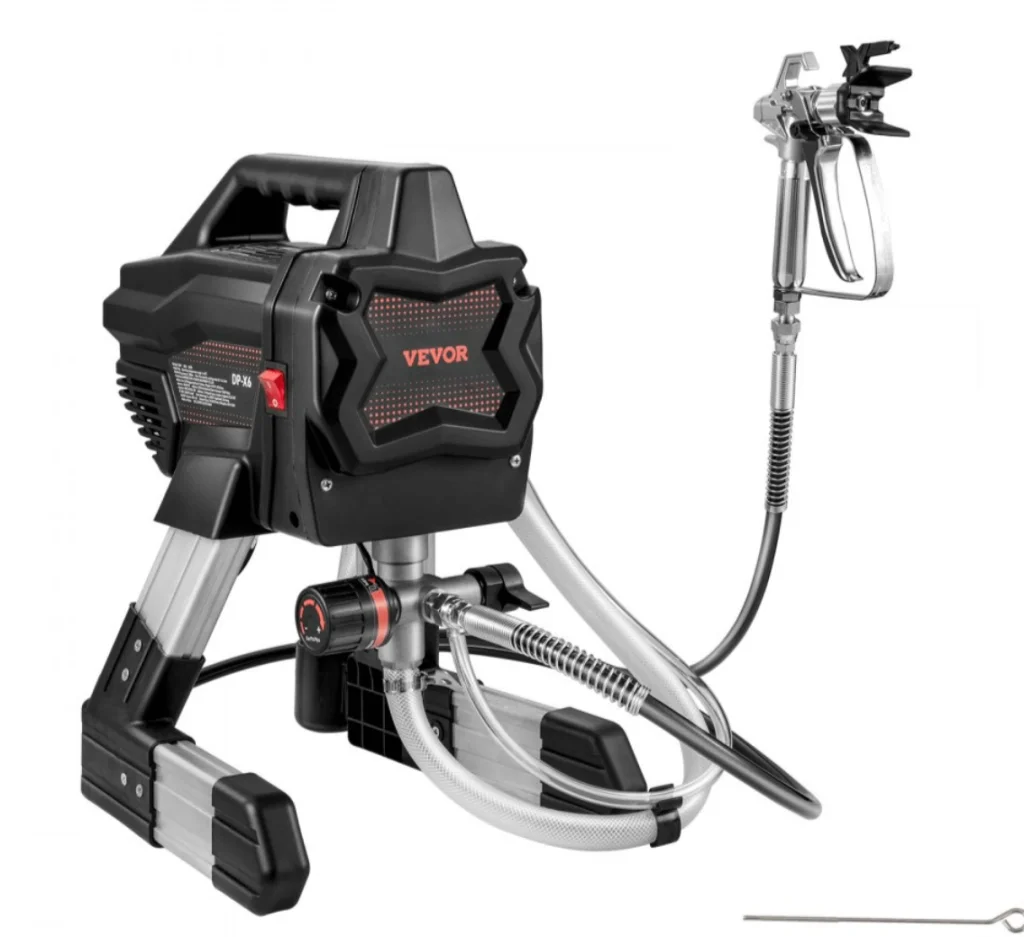
Airless paint sprayers do not use any compressed air in their operation instead, they employ high pressure to create small droplets of paint. These sprayers propel paint through a handgun at a force of approximately 1500 to 3000 pounds per square inch PSI through a small opening at the end of the spray gun.
The high pressure brings droplets of paint and the paint is discharged out in a fan pattern on the surface. This method enables easy and fast application of paint and also provides a good finish, particularly on area sizes.
While HVLP spray is limited to thin flows, airless sprayers are capable of handling high viscosity without reducing their viscosity. As a result, they are best suited for projects that need a large coverage of paint like painting a wall, fences or exterior surfaces among others. The high-pressure application also helps to guarantee that the paint penetrates into porous surfaces to create a strong and long-lasting surface coat.
Advantages of Using an Airless Sprayer
One of the benefits of using an airless sprayer is that it is fast enough to quickly cover a large surface area. They can spray various materials, such as thin stains or thick latex paint.
While airless sprayers are best for outside surfaces because they offer extensive coverage and unmatched endurance. When painting a fence, siding, or deck, an airless sprayer will give you a smooth and uniform coating.
Also, airless sprayers are used for larger projects since they deal well with thicker substances and to add on this they are preferred by professional painters.
Recommended For Your Project
Disadvantages of Airless Sprayers
Airless sprayers are fast and cover a large surface area, but they also have some disadvantages. Some of the challenges that may prevail include the fact that overspray can easily occur when working within the small rooms.
Sprayers that use airless technology can produce high PSI that will spread out paint beyond the intended surface, thus requiring more cleaning.
The other issue is the cost of the equipment. Airless sprayers are usually costlier than HVLP sprayers in terms of maintenance and initial cost, even in the long run. Also, care must be taken when using airless sprayers because they cause jamming, and one has to clean them thoroughly before using them again.
HVLP vs Airless Sprayer: Key Differences
Application Speed and Efficiency
When it comes to speed of application between hvlp vs airless paint sprayers, airless sprayers enjoy the advantages. They provide quick coverage of large areas due to their high pressure, making them ideal for projects that require quick results. If you are painting a large area of a room, a whole house, or a fence, an airless sprayer will help you do the job much faster than with an HVLP sprayer.
In contrast, HVLP sprayers are used for a fine finish than they are for the time of work. While the pressure in this device is slightly lower than the previous devices, it takes time to apply it, but it gives more control in the process. This makes HVLP sprayers more appropriate for fine work, which requires precision and pristine surface finish more than speed.
Finish Quality
In terms of finish quality between airless vs HVLP sprayer, HVLP sprayers can be said to perform better than other sprayers. The low pressure gives a fine spray that does not cause over-spraying, producing a very thin and even layer of paint. That’s why HVLP sprayers are great for jobs where one wants to get a professional look and finish of the furniture, cabinets or trim.
An HVLP sprayer’s finish is smoother than an airless sprayer, especially in the detailed work part of the project.
You will likely benefit from good coverage when using airless sprayers, although the coating applied is relatively thicker and stronger. This is ideal for exterior surfaces and large areas where strength is desirable, though not for intricate work. This is often the case for a high-pressure application, giving a slightly rougher finish that may need to be sanded further or painted over. Overall, depending on your needs, whether it is more time or quality work, you may have to compare your projects’ needs.
Cost Considerations
In terms of cost, HVLP sprayers are usually cheaper than airless sprayers. The initial cost of an HVLP sprayer is also generally lower than that of an airless one, which can be a boon for do-it-yourselfers and hobbyists. Finally, HVLP sprayers are normally cheaper to maintain since they have fewer parts that need frequent servicing.
There is a higher cost associated with airless sprayers, in the sense of the initial cost as well as the cost of maintenance. This high-pressure system needs to be made from more durable parts and so costs may rise.
Secondly, airless sprayers must be cleaned and maintained more often than conventional sprayers since they are more prone to clogging. It may be expensive as compared to brushes and rollers but professional painters know that airless sprayers work faster and are much more capable.
Versatility and Usability
Airless sprayers are slightly more versatile than the traditional methods of painting. This versatility allows them to work on different surfaces, ranging from thin stains to thick latex paint. An airless sprayer can be used for each of these tasks in painting walls, fences, and furniture since it is versatile. Secondly, the high pressure means that it is easy to spray large surface areas; hence, airless sprayers are quickly suitable for internal and external painting.
Although not as flexible as airless sprayers in terms of materials, HVLP sprayers are superior in accuracy and offer greater control. However, they are ideal for work that needs a smooth finish, such as painting furniture, cabinetry, or molding. HVLP sprayers may be slower than other types of sprayers and cannot take thicker materials, but when it comes to coverage and fine work, they are hard to beat. The HVLP sprayer suits a project that calls for precision and a good finish.
Which Sprayer is Easier to Use?
As far as convenience is concerned between airless vs HVLP paint sprayer, HVLP sprayers are often deemed more convenient. The lower pressure corresponds to a greater flow control, allowing for an even and uniform layer.
Moreover, HVLP sprayers are often more lightweight and easier to mobilize, which further enhances their applications particularly in confined spaces. This makes HVLP sprayers suitable for those who are new to paint spraying or those with lesser experience in paint spraying equipment.
There are two types of spray guns, one is airless and the other is not and as we have seen airless sprayers are quite fast and efficient to use though a little complex in terms of their use. Secondly, due to its high pressure, the system is more prone to overspray and surface roughness as compared to the low pressure.
In addition, airless sprayers are normally bigger and heavier than other spraying equipment, thus they are less transportable. What must, however, be pointed out is the fact that most users have over time realized that the airless sprayers are more convenient and efficient than other kinds of sprayers.
Choosing the Right Sprayer for Your Project
The choice between an HVLP and an airless paint sprayer depends on the type of your project. If you will be painting on a larger area and in a short period, it would be wise to use an airless sprayer. Its high pressure enables efficiency and ensures it penetrates better into the target surface, especially exterior surfaces and large surface area.
On the other hand, if your project needs a smooth and accurate application, then go for an HVLP sprayer. Its low-pressure setting provides a uniform, and thin layer that does not leave droplets of paint or overspray thus suitable for detailed furniture, cabinets, and trims. Also, they are cheaper, and easy to use hence appealing to the DIY segment and enthusiasts.
Why Choose VEVOR Paint Sprayers?
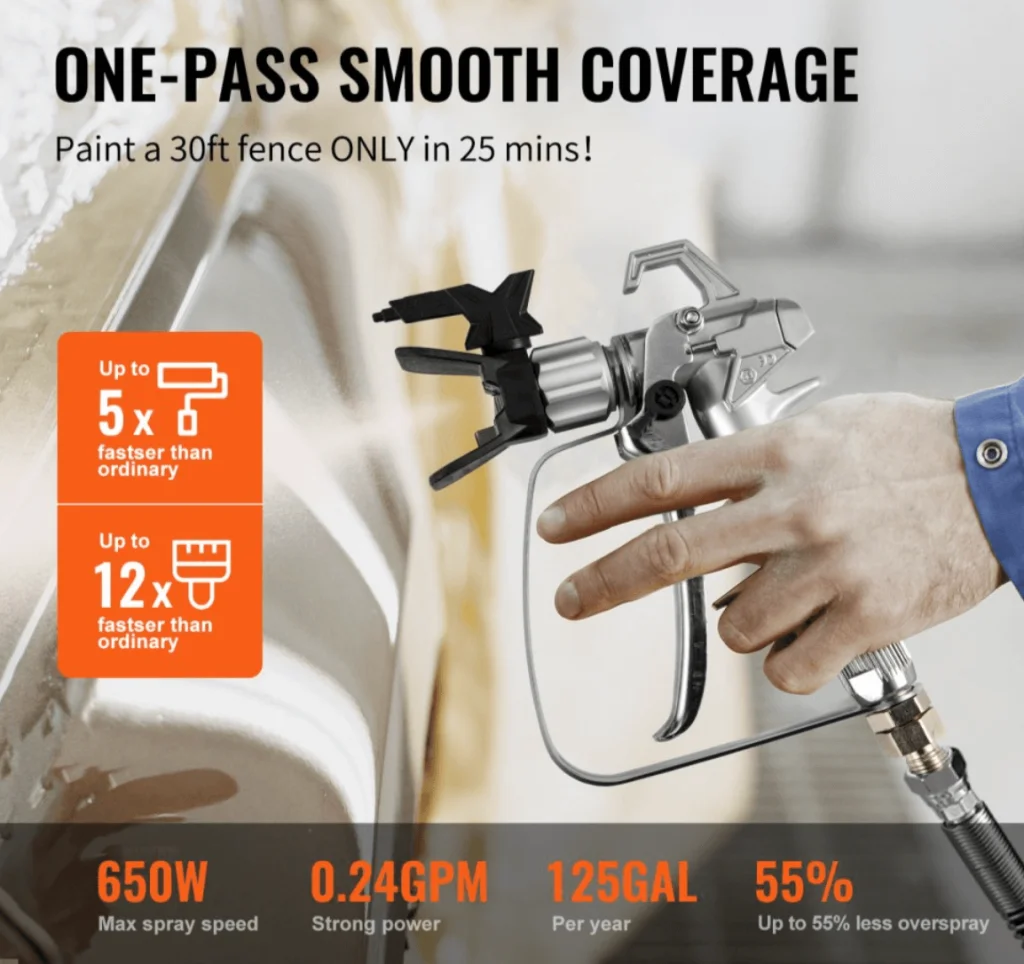
VEVOR paint sprayers are perfect for any painting project, indoors or outdoors. They work with various paints, including latex, chalk, and stain. The powerful 650W motor sprays faster than a brush or roller, saving you time.
You can easily adjust the spray pressure, ensuring a smooth finish and reducing paint waste. The long 24.6ft hose and 11.8in extension rod let you reach high and low areas without a ladder. VEVOR sprayers are reliable, easy to use, and built to last, making them a great choice for both beginners and professionals.
Conclusion
Pros and cons of airless and HVLP paint sprayers are rooted in their specifics, therefore the choice of the equipment depends on you. The best decision for painting fast and effectively is to use an airless sprayer. An HVLP sprayer, on the other hand, will be suitable for you in case you wish to have a smooth and well-coated surface.
Regardless of the kind of sprayer used in the painting process, VEVOR will provide long-lasting, worthy, and suitable materials to help provide and get a high-quality glossy finish.

